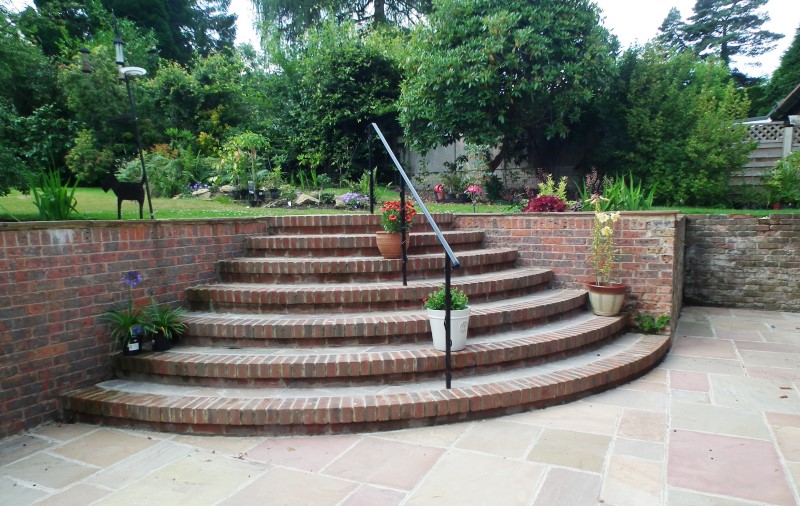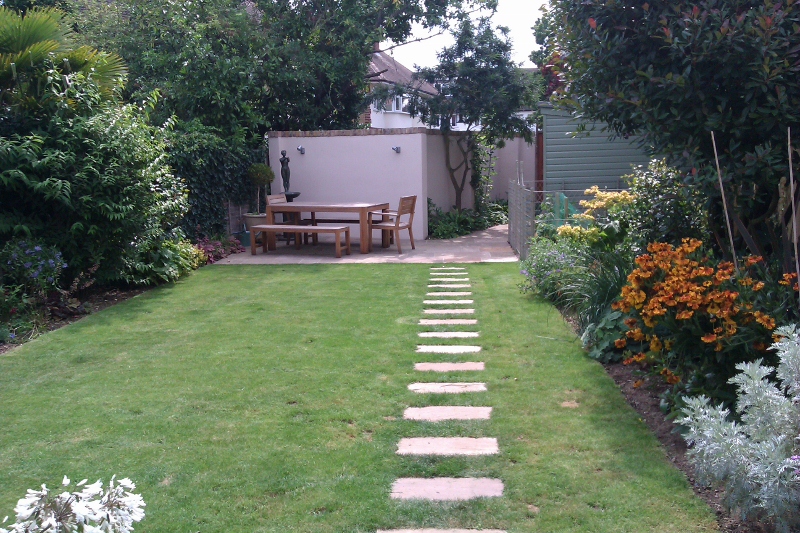Stepping up
As a garden designer it is a rare thing to work on a totally flat garden, there are generally slopes somewhere, toward the house, away from the house, and even from one side to the other. Sometimes these slopes can really obvious at other times be almost imperceptible, until you want to build something flat on it, and then we need to use our training to work out a solution, it might mean a retaining wall to hold back soil, it might need terracing but if you want to access all parts of the garden it will most definitely mean steps.
The most important factor of any set of steps is they should all be the same height and depth; a slight variation can cause tripping or falling, either up or down . Badly thought out steps can become inaccessible for anyone who finds moving around difficult
Steps outside in the garden are not the same as steps inside. Inside steps can afford to be steep, you have a wall, and a bannister to steady your progress. A stair inside is normally between 17 – 18cm high (riser) and around 22 – 24cm deep (tread) for a comfortable ascension, Steps outside are often, without a wall and a bannister for support so need to be more shallow for easy access.
Step one
How high should my steps be?
An ideal riser for an external step is 15cm with a tread of no less than 30cm. You can have smaller steps, with deeper treads, if there is space use the size of your paving slab; but I would advise against steeper than 16cm-17cm unless you have some sort of railing.
Step Two
How many steps do I need?
You need to measure the height between the bottom and top of your slope, and divide the number by 15, this should give you an idea of how many steps you will need. It may need adjusting slightly depending on how much space you have. You may need to make the steps 15.5cm for example, as long as they are all the same. It may be simpler to have two steeper steps than three shallow ones.
Step Three
How wide should my steps be?
In my opinion the wider the better. We’ve all seen the big wide flights of steps in grand gardens, they give a great feeling of space and can be a great feature of the garden. We may not all be able to make a grand statement, but steps should be a comfortable width, similar to a path. In a small garden 60cm would be ample for one person. In areas where people will be passing, steps as with paths would need to be wider. A long flight of steps will require a landing to break the run.
Step four
What should my steps be made of?
With all these steps about steps budget will be a factor in the choices you make, and none more so than the materials you use.
Risers and treads can be made of many different materials, a brick riser with a stone tread is one of the most common combinations, but there is a multitude of options, from metal to brick, concrete, wood sleepers to rockery stone or decking materials.
Whatever materials you use they should complement the other materials in the garden. Steps close to the house could be a combination of patio materials and bricks that match the house. Much will depend on where the steps are. If you need to put some steps in a leafy corner of the garden you could use wood or flat rockery stones to create a more natural look.
Step Five
The finishing touches.
Overhang: This is the lip of the step that juts out over the riser. This can be a simple edge of a paver, or it can be bullnosed, which is when the edge is rounded off. It looks beautiful, but has to be done to order and can be costly.
Decorative risers: this is often a material matching either the house or a wall in the garden, but it can also be something decorative like tiles, or rendered block painted in a strong colour to contrast with the paving.
Hand rails: As I’ve said before, not always necessary, but if the steps are long or anyone who visits the garden needs a bit of support then a railing is helpful. This can be as simple or as fancy as you budget allows.
Enjoy stepping up.



